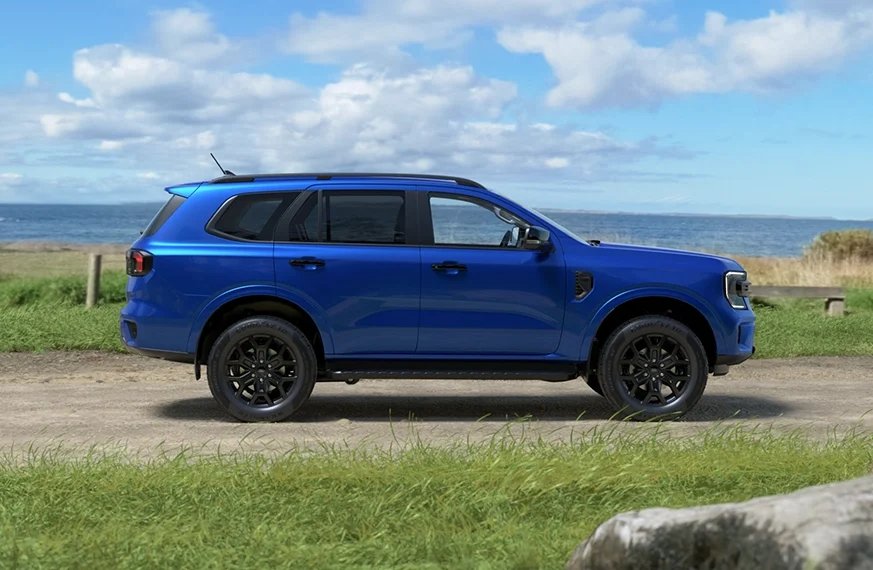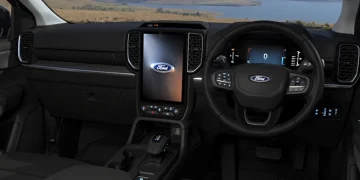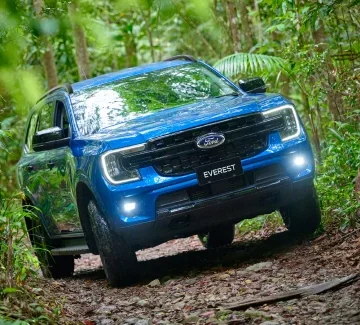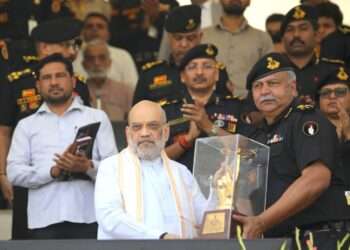The Ford Everest, known previously as the Endeavour in India, marks a significant step in Ford’s journey back into the Indian automotive market. This rugged and capable full-size SUV is aimed squarely at challenging the dominance of models like the Toyota Fortuner and MG Gloster. Here’s an in-depth look at what makes the Everest a compelling option for Indian consumers.
The Ford Everest boasts a commanding road presence with its bold and boxy design. Its front grille, accentuated by a horizontal bar, merges seamlessly with Matrix LED headlights that feature distinctive C-shaped daytime running lights. The robust design is carried through to the rear, where inverted L-shaped LED tail-lights complement its squared-off silhouette.
The SUV stands tall, offering a high ground clearance ideal for navigating India’s varied road conditions, from urban potholes to rural trails. Its large wheel arches house all-terrain tires, emphasizing its off-road-ready stance.
Inside, the Everest blends ruggedness with sophistication. The cabin offers ample space for seven passengers and is lined with durable, high-quality materials to withstand heavy usage. Its dashboard is dominated by a large, vertically oriented touchscreen infotainment system—available in 8.0-inch and 12.0-inch configurations—powered by Ford’s SYNC technology.

The SUV comes packed with features that cater to Indian consumers’ expectations for comfort and convenience:
- Ventilated front seats with premium upholstery
- A fully digital instrument cluster
- Panoramic sunroof
- Wireless charging
- USB ports for all three rows
- Automatic climate control
- Electrically foldable third-row seats
- A powered tailgate
FordPass-connected car technology adds to its appeal, offering remote functions like engine start, door locking/unlocking, and vehicle health monitoring.
Globally, the Ford Everest is offered with a variety of diesel engines. While the exact variants for India are yet to be confirmed, the international lineup includes:
- A 2.0-litre single-turbo diesel engine producing 170 hp
- A 2.0-litre bi-turbo diesel engine delivering 206 hp
- A range-topping 3.0-litre V6 turbo-diesel engine with 246 hp and 600 Nm of torque
All engines are mated to a smooth 10-speed automatic transmission, and buyers can expect both rear-wheel-drive and four-wheel-drive configurations in the Indian market.
The Everest’s body-on-frame construction ensures durability and strength for off-road adventures, while its finely tuned suspension provides a surprisingly refined ride. Despite its rugged underpinnings, the SUV feels composed on highways, with minimal body roll and a planted feel during cornering.
The bi-turbo diesel engine, in particular, stands out for its responsiveness and power delivery, making overtaking on highways or tackling steep inclines effortless.
Ford’s return to the Indian market has been eagerly awaited since the company ceased local operations in 2021. The Everest is likely to be assembled locally at Ford’s Chennai plant to keep costs competitive. Rumors suggest the possibility of importing higher-spec variants with the 3.0-litre V6 diesel engine to cater to enthusiasts.
The Everest’s advanced features, robust design, and powerful engines position it as a premium offering, making it a strong contender against its segment rivals in India.

Market Positioning and Competition
The Ford Everest will go head-to-head with the Toyota Fortuner, the segment leader in India, and the MG Gloster, known for its tech-laden cabin. To succeed, Ford is expected to price the Everest aggressively while offering a feature-packed package that appeals to both urban families and off-road enthusiasts.
The Ford Everest embodies a perfect blend of rugged capability and modern technology, making it an ideal SUV for Indian conditions. Its launch will signify Ford’s renewed commitment to India, catering to consumers who value reliability, off-road performance, and premium comfort.













